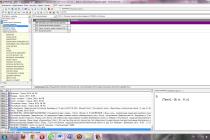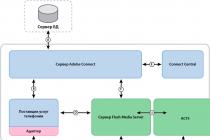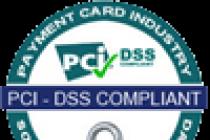Errors when installing applications from files with the .msi extension are one of the manifestations of problems with the Windows Installer service (in the Russian version, Windows Installer). Users of all versions of this OS, with the exception of the earliest, encounter a similar phenomenon. Until now, the problem with the installer is one of the common reasons why users decide to reinstall the system. Let's try to figure out how to avoid this. The reason why Windows Installer is not working may be the following:
- viral infection, and removing the virus does not always solve the problem;
- incorrect installation Windows updates;
- malfunction of security software, when instead of blocking one suspicious msi file, the installation service is blocked entirely;
- changes in security policies on the computer;
- damage system files or registry for reasons not related to viruses (removal of installer components, unskilled editing of the registry, "crooked" software, malfunction hard disk etc.).
Checking the integrity of the Windows Installer structure
Windows Installer is represented by the following components:- file C: \ Windows \ System32 \ Msiexec.exe - directly by the installer application itself;
- the file C: \ Windows \ System32 \ msi.dll - the Windows Installer library;
- by the Msiserver service, whose settings are stored in a registry key.
 If there are no files, copy them from another system of the same version or from the installation disc. If the registry key is missing or damaged - also transfer it from working system... To do this, on a working computer, start the registry editor (C: \ Windows \ Regedt.exe) and find the above-named section.
If there are no files, copy them from another system of the same version or from the installation disc. If the registry key is missing or damaged - also transfer it from working system... To do this, on a working computer, start the registry editor (C: \ Windows \ Regedt.exe) and find the above-named section.  Expand the context menu of the msiserver folder by right-clicking and click the "Export" item. Save the file in .reg format and transfer it to the problem machine.
Expand the context menu of the msiserver folder by right-clicking and click the "Export" item. Save the file in .reg format and transfer it to the problem machine.  Double-click this file and confirm your consent to add data to the registry. Reboot your computer.
Double-click this file and confirm your consent to add data to the registry. Reboot your computer.  If the Msiserver service still does not start, check if the RPC (Remote Procedure Call) service it depends on is running.
If the Msiserver service still does not start, check if the RPC (Remote Procedure Call) service it depends on is running.  You can re-register the installer files and restart the service using a set of special commands in the command line. For convenience, you can create a batch file: paste the set of actions into notepad and save as with the .bat extension. To run the file, just double click on it. To make the changes take effect, click on the desktop and press F5.
You can re-register the installer files and restart the service using a set of special commands in the command line. For convenience, you can create a batch file: paste the set of actions into notepad and save as with the .bat extension. To run the file, just double click on it. To make the changes take effect, click on the desktop and press F5. Checking security settings and access rights
Windows Installer may not work either due to the fact that it is blocked by security software or the operating system does not have the necessary rights. First, let's figure out the software. If you have an antivirus installed, temporarily disable it. Each product has its own disabling methods, but most often this is done through the context menu of the antivirus icon in the system tray. Now let's get into the rights. Open the context menu of Msiexec.exe and expand its properties. Look at the list of groups and users on the Security tab. Among them must be "System" and the service "Trustedinstaller", and the latter must have full access to the file and be its owner. The system must have "read" and "read and execute" permissions.
Look at the list of groups and users on the Security tab. Among them must be "System" and the service "Trustedinstaller", and the latter must have full access to the file and be its owner. The system must have "read" and "read and execute" permissions.  The Trustedinstaller service first appeared in Windows Vista, so in Windows XP, you must give the system full access. Everything written below applies to versions released after XP. To check who the owner of Msiexec.exe is, click the Advanced button on the same tab.
The Trustedinstaller service first appeared in Windows Vista, so in Windows XP, you must give the system full access. Everything written below applies to versions released after XP. To check who the owner of Msiexec.exe is, click the Advanced button on the same tab.  In the next window, expand the "Owner" tab. Take ownership of the Trustedinstaller service if specified otherwise. If it's not in the Change Owner To list, click the Change button followed by Other Users and Groups.
In the next window, expand the "Owner" tab. Take ownership of the Trustedinstaller service if specified otherwise. If it's not in the Change Owner To list, click the Change button followed by Other Users and Groups.  Enter Trustedinstaller in the "Enter names ..." field, click "Check Names" and OK. Return to the previous window. On the Effective Permissions tab, assign the required rights to the Trustedinstaller and the system.
Enter Trustedinstaller in the "Enter names ..." field, click "Check Names" and OK. Return to the previous window. On the Effective Permissions tab, assign the required rights to the Trustedinstaller and the system.  The msi.dll library should have exactly the same security settings. Now let's check if there are any restrictions for the "System" user to access the following:
The msi.dll library should have exactly the same security settings. Now let's check if there are any restrictions for the "System" user to access the following: - system drive (usually drive C);
- temporary folders (these are C: \ Windows \ Temp and C: \ Users \ Current_user \ AppData \ Temp);
- folder C: \ Config.Msi;
- the folder where the msi file from which you are trying to install the program is located.
Some programs and drivers in Windows should only be installed with administrator rights. In the case of EXE files, the option to install as administrator is present in the context menu, which is invoked by clicking on the file with the right mouse button. There is no such option for MSI packages, but it can be added through the Registry Editor.
Instructions
Open the Run dialog from the start menu or by pressing the Win + R keyboard shortcut. In the window that opens, write regedit and press Enter. The Registry Editor will start. Confirmation of starting the editor may be required depending on your User Account Control settings.
Go to the HKEY_CLASSES_ROOT \ Msi.Package \ shell branch. Right-click on "shell" and in the menu that opens, select the option to create a new partition.
A subsection will be added to the "shell" section. Rename it to "runas" (no quotes needed).

In the window on the right, double-click the "Default" key with the left mouse button or right-click once and select "Change ..." In the empty value field, enter "Run as Administrator". Confirm the changes by clicking the OK button.

Now right click on "runas" and select the create partition option again. Create a subkey named "command" (without quotes).

Edit the "Default" key by entering the command "msiexec / i"% 1 "" in the value field (without the herringbone quotes, but with quotes for% 1). Click OK.

The most common problem that causes users to be unable to open this file is an incorrectly assigned program. To fix this in Windows you need to right-click on the file, in the context menu, point to the "Open with" item, and select the "Select program ..." item in the drop-down menu. As a result, you will see a list installed programs on your computer, and you can choose the one that suits you. We also recommend checking the box next to "Use this app for all MSI files".
Another problem that our users also encounter quite often is that the MSI file is corrupted. This situation can arise in many cases. For example: the file was downloaded incompletely as a result server errors, the file was damaged initially, etc. To fix this problem, use one of the recommendations:
- Try to find desired file in another source on the Internet. You may be lucky enough to find a more suitable version. Google search example: "File filetype: MSI". Just replace the word "file" with the name you want;
- Ask to send you the original file again, it may have been damaged in transit;
Introduction
Our installers for Windows contain full package installation of the client part of the program (MSI) (built on the basis of Windows Installer v2.0). Instructions for network installation assumes that the user is familiar with the basics of Windows Installer, in particular with deploying MSI files. This package can be used with any operating system Windows supporting Windows Installer v2.0.
Installation on a network server
- Double click on the resulting file ( Yenka_Setup_ (MSI) .exe)
- Install this package to the folder general access to your programs.
- Attention : The program must be activated BEFORE deploying the package on the network. To do this, run "Yenka.exe" from the folder where you installed the program (<путь установки>\ program files \ Yenka \ Software \ Yenka.exe), and follow the activation instructions.
Installation
Installing an MSI package using the command line
- In the command box, enter the line:
msiexec / i "<путь к MSI файлу>\ YK.msi "
where:<путь к MSI файлу>this is the file path Windows package Installer. For example, a line might look like this: msiexec / i "C: \ Program Files \ Yenka \ YK.msi" - Press the ENTER key
Attention: The Windows Installer service will allow you to install in "invisible" mode, using the "/ q" switch. For example: msiexec / i "C: \ Program Files \ Yenka \ YK.msi" / q... To show the progress bar of the installation, you can use the " / qb".
Removing an MSI package using the command line
- From the "Start" menu, select "Run ..."
- In the command box, enter the line:
msiexec / x "<путь к MSI файлу>\ YK.msi "
where:<путь к MSI файлу>this is the path to the Windows Installer package file - Press the ENTER key














